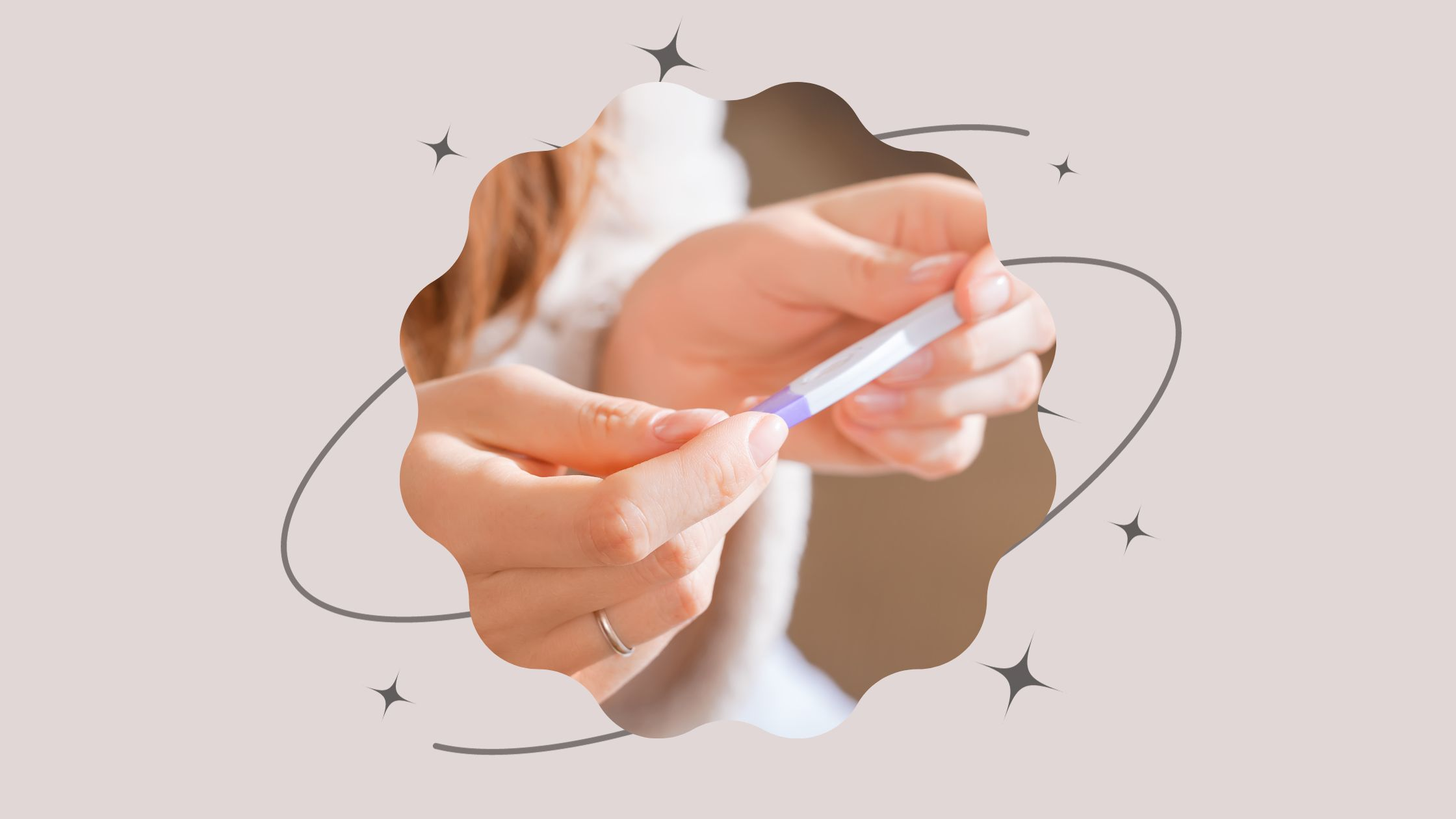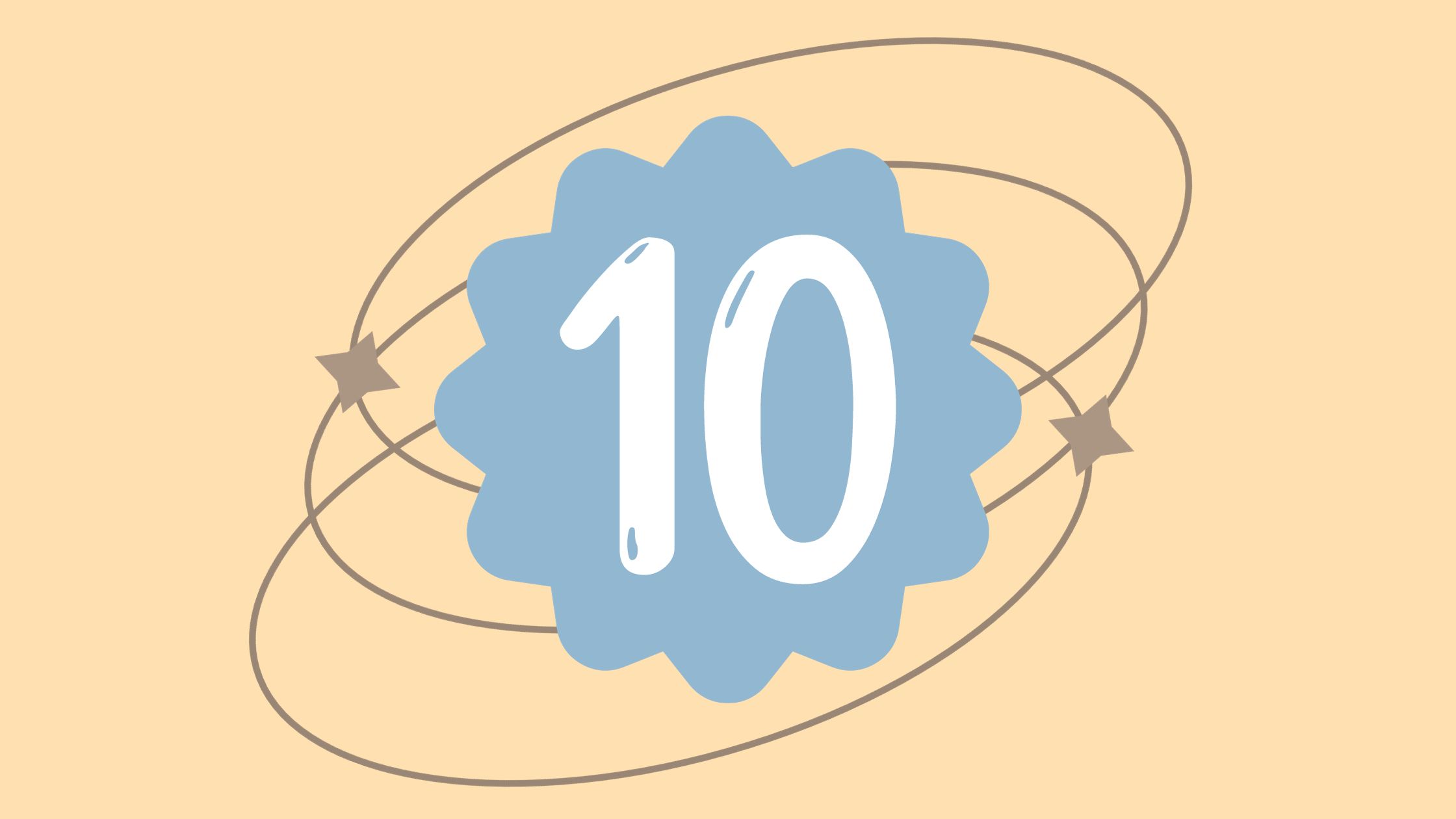You’re 10 days past ovulation, tapping your fingers, biting your nails, and wondering, “Am I or am I not pregnant?”. We get it; the two-week wait can feel like an eternity. At 10 DPO, your body is already undergoing subtle changes, even if it’s too early for a home test to detect them.
Even though everyone’s journey while trying to conceive (TTC) is unique, there are some common early signs of pregnancy to watch out for. And even though it might feel like the two-week wait between ovulation and testing is dragging on, paying close attention to your body might give you some clues.
While some women might not suspect they’re pregnant until after their first missed period, others are on high alert, looking for the slightest hint of early pregnancy. But if you’re eager to know if you’re pregnant before taking a test, keep an eye out for those early indicators. Hang in there, and fingers crossed for that Big Fat Positive!
What is 10 DPO?
“DPO stands for ‘Days Post-Ovulation’. It represents the number of days that have passed since ovulation happened. If you’re aiming to conceive, this period is optimal for conception. By now, the egg has traveled down the fallopian tube and could be in the process of fertilization.
During these days, you might observe certain bodily changes. These subtle shifts are your body’s way of gearing up for a potential pregnancy over the next nine months.
Why is 10 DPO Important?
At the time of ovulation, your ovaries release an egg that can survive for 12 to 24 hours. If this egg is fertilized, it then travels to the uterus for implantation, a process that takes about 6-12 days. 10 DPO is a significant milestone in a potential pregnancy. As you approach this point, you stand on the brink of numerous changes that will unfold over the next nine months. If you are pregnant, the initial signs start to manifest around this time. Be on the lookout for these symptoms.
What Is Happening to Your Body at 10 DPO?

At 10 DPO, you’re either gearing up for implantation or about a week away from your next period. Nevertheless, your body is going through some significant hormonal changes. On the 10th day past ovulation, implantation might have happened, be in the process, or be just around the corner. Following the release of an egg from the ovary, there’s an increase in progesterone levels. Whether or not pregnancy occurs, these elevated progesterone levels after ovulation ensure that no additional eggs mature or get released.
In the early stages of pregnancy progesterone also prepares the uterine lining for the fertilized egg to implant itself. Plus, it’s responsible for slowing down your digestion and adjusting the ligaments in your back. These changes can lead to those tell-tale 10 DPO symptoms.
But wait, there’s another hormone making an entrance after implantation – human chorionic gonadotropin (hCG). This is the star of the show when you take a pregnancy test.
Remember, that these early pregnancy signs can look a lot like the ones you get before your period. The progesterone hormone, whether it’s from a potential pregnancy or just your regular cycle, can cause PMS-like symptoms.
Early Pregnancy Symptoms at 10 DPO
At 10 DPO, the symptoms are often indistinguishable between a woman who is pregnant and one nearing her menstrual cycle. This similarity arises because the hormone progesterone is elevated in both scenarios.
Although 10 DPO might be too soon for accurate pregnancy test outcomes, you could notice symptoms at this stage that suggest a possible pregnancy.
1. Fatigue or Exhaustion
Women often grapple with fatigue at 10 days post ovulation, largely thanks to the hormone progesterone. This hormone gears up the body for potential pregnancy, which can be quite taxing. Even with adequate sleep, the body’s adjustments and the emotional anticipation of a possible pregnancy can amplify the tiredness. Simple remedies like a walk, relaxation, or pregnancy vitamins can help if you feel drained.
2. Cramps
Cramps are a common early signs of pregnancy at 10 DPO. However, don’t expect any vaginal bleeding, though spotting in the early months of pregnancy isn’t uncommon.
If you’re feeling a mix of dull pressure and abdominal cramps, there are ways to ease the discomfort, like regular exercise, drinking water, or even a soothing massage. If the pain ramps up or becomes too much to handle, it’s time to see a healthcare professional.
3. Digestive Problems
It’s common to feel bloated or even slightly constipated at 10 DPO. Blame it on the surge in progesterone, which can throw your digestive system for a loop. This hormone tends to slow down digestion and relax the smooth muscle tissues, leading to that all-too-familiar bloated feeling. Add to that an uptick in water retention and trapped gas in your intestines, and you’ve got a recipe for discomfort.
But here’s the silver lining: there are ways to ease the bloat. Tweaking your diet can make a world of difference. Consider cutting back on foods that can cause gas, like dairy, beans, and broccoli. Instead, focus on upping your fiber and fluid intake. And if you suddenly crave certain foods or feel hungrier than usual, you’re not alone. Some women do experience increased appetite and specific food cravings while expecting.
4. Nausea
And then there’s the infamous “morning sickness.” Despite its name, it doesn’t stick to a schedule. You could feel nauseous morning, noon, or night. While many women recognize it as one of the first signs of pregnancy, it can pop up at any point during the journey. From certain foods to specific smells, triggers for morning sickness can vary, making it a bit of a wild card.
The main culprit behind this queasy feeling? You guessed it, progesterone. While essential during early pregnancy, this hormone can sometimes make you feel like you’re on a rocky boat ride.
Speaking of early pregnancy, many women suddenly find themselves with a heightened sense of smell. Everyday scents, whether it’s your favorite perfume or the aroma of freshly brewed coffee, can suddenly turn your stomach.
5. Aches and Pains
Progesterone causes the supporting ligaments and discs in your back to soften, leading to discomfort. This hormone and relaxin work to loosen up the ligaments and joints, especially around the pelvic area, preparing your body for the journey ahead.
But it’s not just your back that might be giving you grief. Many women also report headaches around 10 DPO. Headache can pop up due to changes in blood flow and the increased fluid volume in your body. While fainting is on the rarer side, it’s not unheard of, given the shifts in blood circulation and volume. To help keep these symptoms at bay, it’s a good idea to up your fluid and water intake.
As your pregnancy progresses, your body will continue to change, shifting your center of gravity. This, combined with weight gain, can put even more strain on your back.
6. Breast Tenderness
Thanks to fluctuating hormone levels and increased blood flow, it’s common for breasts to feel sore, swollen, and even a bit tingly. Don’t be surprised if they feel heavier than usual or if the area around your nipples, the areola, darkens a shade or two.
If you’re wondering, “Is this normal?” you’re not alone. Breast pain is a common symptom during ovulation too. In fact, changes to the breasts can kick in as early as 1 day past ovulation (DPO). As your body gears up for the possibility of pregnancy, your breasts start getting ready to produce milk. While the tenderness might peak in the first trimester, rest assured, your body is just doing its thing, adapting and preparing to nourish your baby.
A good supportive bra can be a game-changer during this time, offering some much-needed relief from the heaviness and soreness. And as your pregnancy progresses, your breasts will continue to evolve, all in preparation for feeding your baby.
7. Spotting
Spotting or light bleeding at 10 DPO? It might just be implantation bleeding, a telltale sign that a fertilized egg has attached itself to the walls of your uterus.
While it might sound a bit alarming, implantation bleeding is pretty faint and typically wraps up in a day or two. It’s worth noting that only about a third of women experience this, so it’s on the rarer side of early pregnancy symptoms. Often this light bleeding can be mistaken for the start of your period, given the timing. But unlike your monthly flow, implantation spotting is brief and doesn’t stick around.
8. Frequent Urination
Finding yourself dashing to the bathroom more than usual? This could be one of the early signs of pregnancy. At around 10 DPO, the increased blood flow to your kidneys can lead to more frequent urination. It’s all thanks to your kidneys working overtime, producing more urine shortly after conception.
While this symptom might be quite pronounced in the early days, it tends to ease up as you move through your first trimester. However, don’t get too comfy! As you approach the end of your third trimester, you might find yourself back in the bathroom more often, all thanks to the growing baby putting pressure on your bladder.
9. Mood Swings
Feeling a bit moody after 5 days past ovulation? It’s pretty typical. These mood swings should level out as your period approaches. But if those emotions keep riding high or you find yourself on an emotional rollercoaster, you might just have a baby on the way.
Can Implantation Happen at 10 DPO?
Implantation refers to the attachment of a fertilized egg to the lining of the uterus. This usually happens between 8-10 days post-ovulation (DPO). Therefore, experiencing implantation at 10 DPO is not unusual.
Can You Take a Pregnancy Test at 10 DPO?

If you’re itching to take a pregnancy test and you’re at 10 DPO, you might be jumping the gun a bit. While the excitement is understandable, the reality is that testing this early can give you a false negative, even if you are pregnant. Why? It all boils down to implantation and the hormone hCG.
Implantation, when the fertilized settles into the uterine lining, typically happens between 6 and 12 DPO. Most women, about 84% according to a study in the New England Journal of Medicine, experience it between 8 and 10 DPO. Once implantation occurs, your body starts producing the hormone hCG, which is what pregnancy tests detect. The levels of hCG might be too low to register on a test right after implantation.
So, if you’ve taken a test at 10 DPO and it’s negative, don’t lose hope. Getting a “big fat negative” (BFN) this early on is common. Waiting until the day of your expected period is a good idea for more reliable results. By then, if you’re pregnant, hCG levels will be high enough for most home tests to detect.
And if you’re keen on avoiding the guessing game, consider tracking your ovulation. Knowing your exact fertile window can give you a clearer picture of when to test.
10 DPO and Positive Pregnancy Test (BFP)

While waiting for two weeks post-ovulation is the gold standard for accurate test results, the anticipation can be agonizing for those trying to conceive. If you’re experiencing any pregnancy-like symptoms around 10 DPO, it might be tempting to take the test.
Taking a pregnancy test at 10 DPO can yield a Big Fat Positive (BFP), especially if sensitive tests pick up on rising hCG levels, which can happen if implantation occurs. Typically, implantation occurs between 8 to 12 days past ovulation, meaning there’s a chance for a positive result at 10 DPO. However, the outcome largely hinges on the hCG levels in the urine, which can vary among women. Some might see a positive even before 10 days, while others might not.
10 DPO and Negative Pregnancy Test (BFN)

Taking a pregnancy test at 10 DPO is quite early; even if you don’t have symptoms, it doesn’t guarantee a negative result. The hormone hCG, present in urine, might take up to two days to be recognized by home tests. It’s possible to be pregnant at 10 DPO, but the hCG levels might not be sufficient for detection. It’s advisable to wait until your next missed period, as testing too soon is a frequent reason for false-negative outcomes.
Monitoring your menstrual cycle can help determine the optimal testing time. Ovulation days can differ from one cycle to another and among women. Testing prematurely can yield ambiguous results like faint lines that can be difficult to interpret. If you get a clear negative (BFN) at 10 DPO, consider retesting after your expected period or in a few days for more definitive results.
Is it Possible to Get a Negative Result Even After Experiencing Pregnancy Signs at 10 DPO?
At 10 DPO, many women might not notice any pregnancy signs since it’s a bit early for such symptoms to manifest. In fact, most pregnancy-related symptoms typically emerge between 21 to 28 DPO, or around 5 to 6 weeks of gestation. What’s intriguing is that the symptoms you might feel around 10 DPO, such as cramps, bloating, fatigue, and sore breasts, can be eerily similar whether you’re pregnant or just about to start your period.
The culprit? Progesterone. This hormone is elevated in both scenarios. If you’re pregnant, progesterone levels will continue to rise; if not, they’ll dip as you approach your period. So, it’s a bit of a guessing game. You could have all the symptoms and still get a big fat negative (BFN) on a pregnancy test, or conversely, you might have no symptoms and get a big fat positive (BFP).
Bottom line? It’s entirely possible to be pregnant and still get a negative test result at 10 DPO. The body sure keeps us on our toes, doesn’t it?
Can You Get a Negative Pregnancy Test at 10 DPO and Still Be Pregnant?
Absolutely, getting a negative pregnancy test at 10 DPO doesn’t necessarily mean you’re not pregnant. The reason behind this is the hCG levels in your body. This hormone, which pregnancy tests detect, might not have surged enough by 10 DPO to be picked up by the test. So, if you’re marking your calendar, it’s a good idea to wait until a day after your missed period, typically around 14 or 15 DPO, to get the most accurate results.
What if I Have No Symptoms at 10 DPO?
At 10 DPO, it’s entirely normal not to notice any pregnancy symptoms, but that doesn’t mean you aren’t pregnant. Everybody is unique, and yours might just reveal those telltale signs a bit later on. As you near 10 DPO, watch for symptoms like headaches, nausea, fatigue, cramps, and tender breasts. However, always remember that a positive test result is the only surefire way to confirm a pregnancy. So, hang in there and listen to your body!
Frequently Asked Questions (FAQs)
Can You Experience Pregnancy Symptoms at 10 DPO If Using IUD?
While it’s very rare for someone with an IUD to get pregnant, it’s not unheard of. In fact, there have been cases where women have conceived despite having this intra-uterine contraceptive device in place. Now, if you have an IUD and suddenly start feeling those telltale pregnancy vibes, don’t just brush it off. It’s crucial to highlight it to your doctor. There’s a slight risk of miscarriage with IUDs. However, most women with IUDs who do conceive usually have smooth-sailing pregnancies.
How Long After Implantation Does hCG Rise?
Right after implantation, hCG levels start to rise. However, because they begin at such a low point, it might take a while for hCG to reach a level that can be detected in your blood or urine.
How Long Does It Take for hCG to Show Up in Urine?
Based on a 2008 study in Human Reproduction, it might take up to two days for detectable levels of hCG to appear after implantation.
Typically, implantation happens between 8 to 10 DPO, so most women can expect a positive pregnancy test result between 10 – 12 DPO.
However, some women report getting positive results earlier. There are two potential reasons for this:
1. They might have miscalculated their ovulation date. This is probably the case for those who say they got a positive result at 7 DPO or even earlier.
2. While it generally takes up to two days for hCG levels to be detectable, some women might experience this sooner, leading to positive tests as early as 8 – 10 DPO.
References
P.A. Nepomnaschy, C.R. Weinberg, A.J. Wilcox, D.D. Baird, Urinary hCG patterns during the week following implantation, Human Reproduction, Volume 23, Issue 2, February 2008, Pages 271–277, https://doi.org/10.1093/humrep/dem397
MacLennan AH. The role of the hormone relaxin in human reproduction and pelvic girdle relaxation. Scand J Rheumatol Suppl. 1991;88:7-15. PMID: 2011710.
Wilcox AJ, Baird DD, Weinberg CR. Time of implantation of the conceptus and loss of pregnancy. N Engl J Med. 1999 Jun 10;340(23):1796-9. doi: 10.1056/NEJM199906103402304. PMID: 10362823.

